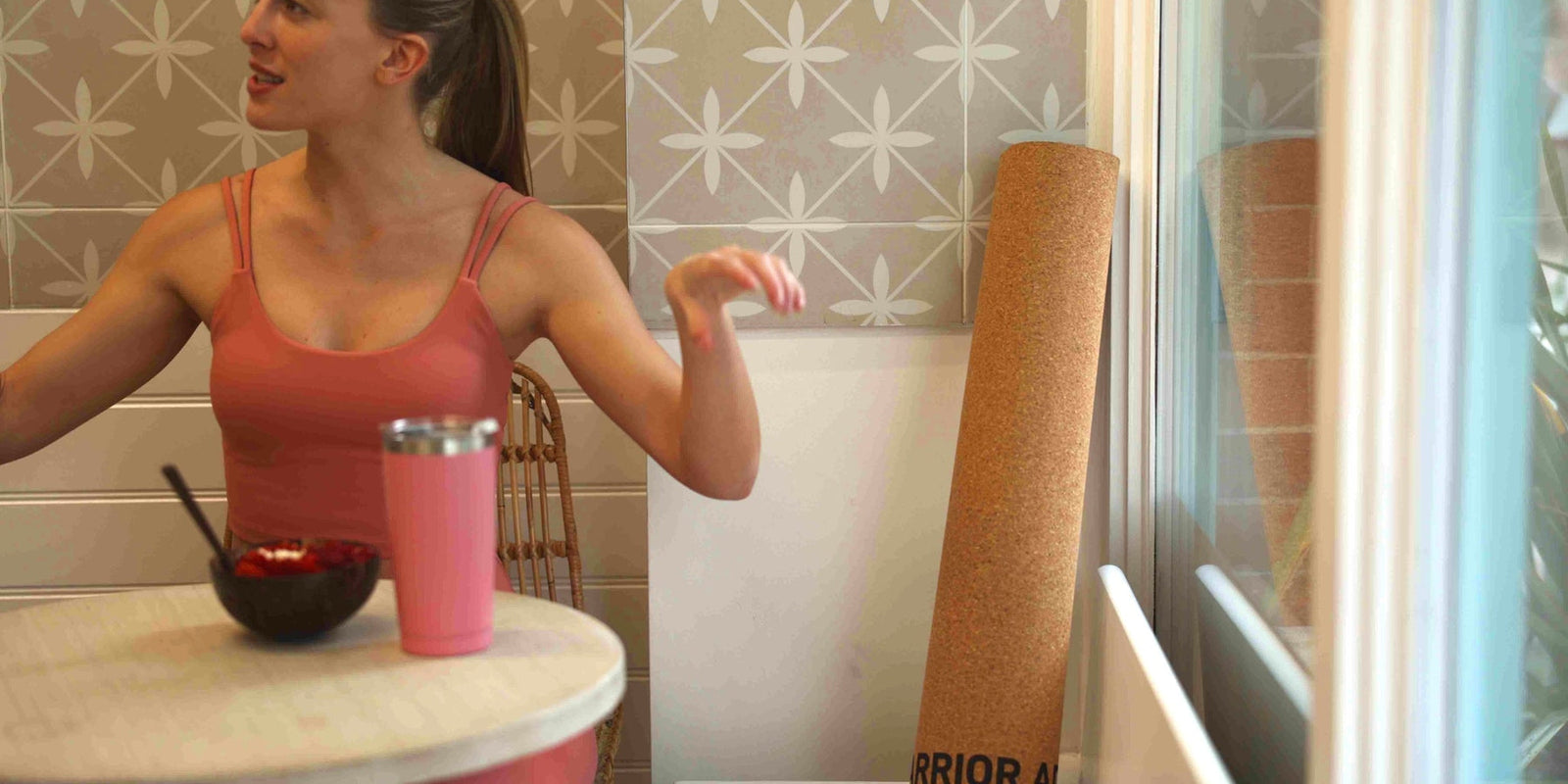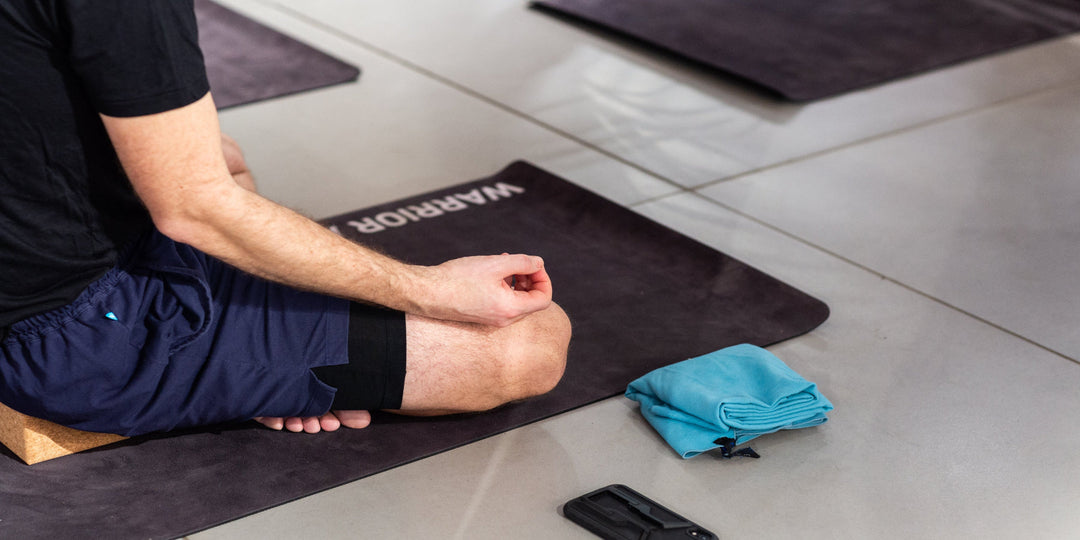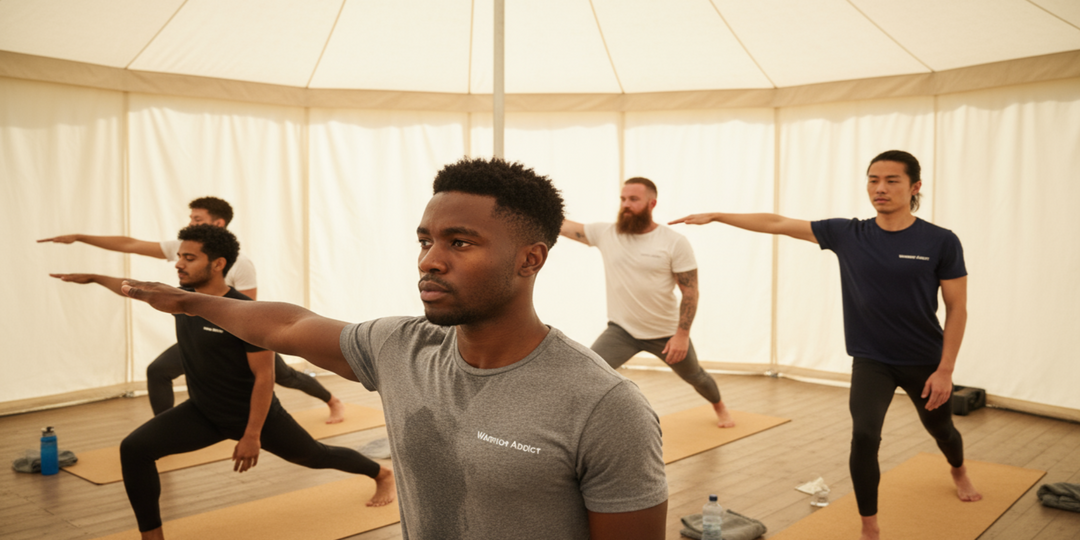How to Choose the Right Yoga Mat for Your Practice: Our Buyer's Guide

How to Choose the Right Yoga Mat for Your Practice: Complete Buyer's Guide 2025
Choosing the right yoga mat is one of the most important decisions you'll make for your practice. Your mat is your foundation, your sacred space, and often your most-used piece of yoga equipment. With countless options available, finding the perfect mat can feel overwhelming. This comprehensive guide will help you navigate the choices and find a mat that supports your practice for years to come.
Our Top Recommended Yoga Mats
Understanding Yoga Mat Materials
The material of your yoga mat affects everything from grip and durability to environmental impact and price. Here are the most common materials and their characteristics:
Natural Cork
Cork mats like our Warrior Cork Yoga Mat offer unique benefits that make them increasingly popular among serious practitioners.
Pros:
- Naturally antimicrobial and odor-resistant
- Improves grip when wet (perfect for hot yoga)
- Sustainable and eco-friendly
- Unique, natural texture and appearance
- Durable and long-lasting
Cons:
- Higher initial cost
- Can feel firm compared to cushioned mats
- May require break-in period
Natural Rubber
Natural rubber mats provide excellent grip and cushioning, making them a popular choice for many yoga styles.
Pros:
- Superior grip in most conditions
- Excellent cushioning and joint support
- Durable and long-lasting
- Available in various thicknesses
Cons:
- Can become slippery when very wet
- May have initial rubber smell
- Heavier than synthetic options
- Some people are allergic to latex
Synthetic Materials (PVC, TPE)
Synthetic mats offer affordability and variety, though they may not match the performance of natural materials.
Pros:
- Budget-friendly options available
- Lightweight and easy to transport
- Wide variety of colors and designs
- Easy to clean
Cons:
- Less eco-friendly
- May wear out faster
- Can become slippery with sweat
- May contain harmful chemicals
Choosing the Right Thickness
Mat thickness affects comfort, stability, and portability. Here's how to choose:
Thin Mats (1-3mm)
- Best for: Travel, hot yoga, balance-focused practices
- Pros: Lightweight, portable, better ground connection
- Cons: Less cushioning for joints
Standard Mats (4-5mm)
- Best for: Most yoga styles, general practice
- Pros: Good balance of comfort and stability
- Cons: May not provide enough cushioning for sensitive joints
Thick Mats (6mm+)
- Best for: Restorative yoga, yin yoga, joint issues
- Pros: Maximum cushioning and comfort
- Cons: Heavier, less stable for standing poses
Size and Dimensions
Standard Size
Most yoga mats measure 68" x 24" (173cm x 61cm), which works well for most practitioners.
Long Mats
If you're taller than 6 feet, consider a longer mat (72-84 inches) to ensure you don't slip off during practice.
Wide Mats
Wider mats (26-30 inches) provide extra space for arm movements and side poses.
Grip and Texture
Good grip is essential for safety and confidence in your practice:
Surface Texture
- Smooth: Easy to clean but may be slippery
- Textured: Better grip but can be harder to clean
- Natural texture: Cork and rubber provide natural grip
Grip Performance
- Dry grip: How well the mat grips when dry
- Wet grip: Performance when you're sweating
- Consistency: Maintains grip throughout practice
Choosing Based on Your Yoga Style
Hot Yoga and Bikram
Best choice: Cork mats like our Warrior Cork Yoga Mat
Why: Cork becomes grippier when wet, making it ideal for sweaty practices.
Vinyasa and Flow
Best choice: Natural rubber or high-quality synthetic mats
Why: Need consistent grip for dynamic movements and transitions.
Yin and Restorative
Best choice: Thicker, cushioned mats
Why: Comfort is key for long-held poses on the floor.
Ashtanga and Power Yoga
Best choice: Durable mats with excellent grip
Why: Intensive practice requires mats that can handle frequent use.
Beginner Practice
Best choice: Standard thickness with good grip
Why: Balance of comfort and stability while learning.
Budget Considerations
Entry Level (£15-40)
- Basic PVC or TPE mats
- Good for trying yoga or occasional practice
- May need replacement sooner
Mid-Range (£40-80)
- Quality synthetic or basic natural rubber mats
- Good balance of performance and price
- Suitable for regular practice
Premium (£80+)
- High-end natural materials like cork or premium rubber
- Superior performance and durability
- Investment for serious practitioners
Environmental Considerations
If sustainability is important to you, consider:
- Natural materials: Cork, natural rubber, organic cotton
- Recycled content: Mats made from recycled materials
- Biodegradability: Materials that break down naturally
- Manufacturing practices: Companies with sustainable processes
- Durability: Longer-lasting mats reduce waste
Testing and Trying Before Buying
What to Test
- Grip: Try poses that require good traction
- Comfort: Test kneeling and lying positions
- Stability: Check balance in standing poses
- Size: Ensure adequate space for your practice
Where to Test
- Yoga studios often have demo mats
- Some retailers offer trial periods
- Borrow from friends to test different types
- Read detailed reviews from other practitioners
Care and Maintenance
Daily Care
- Wipe down after each use
- Allow to air dry completely
- Store properly (rolled or flat)
- Keep away from direct sunlight
Deep Cleaning
- Weekly deep clean with appropriate cleaner
- Use natural cleaners for natural materials
- Avoid harsh chemicals that can damage the mat
- Follow manufacturer's care instructions
When to Replace Your Mat
Signs it's time for a new mat:
- Loss of grip that affects safety
- Visible wear, tears, or thinning
- Persistent odors that won't clean out
- Comfort issues affecting your practice
- Changes in your practice style requiring different features
Making Your Final Decision
Priority Checklist
Rank these factors by importance to you:
- Grip and safety
- Comfort and cushioning
- Durability and longevity
- Environmental impact
- Price and value
- Portability
- Aesthetics
Questions to Ask Yourself
- What type of yoga do I practice most?
- How often do I practice?
- Do I travel with my mat?
- Do I have any joint sensitivities?
- How important is environmental impact?
- What's my budget range?
Conclusion: Your Perfect Mat Awaits
Choosing the right yoga mat is a personal decision that depends on your practice style, physical needs, values, and budget. Take time to consider what matters most to you, and don't be afraid to invest in quality – a good mat will support your practice for years to come.
Whether you choose the sustainable luxury of cork or the reliable performance of natural rubber, the most important thing is finding a mat that makes you excited to practice. Your perfect mat is out there waiting to become the foundation of your yoga journey.
Ready to find your perfect mat? Browse our complete collection of Yoga Mats and discover the mat that will transform your practice.







Leave a comment